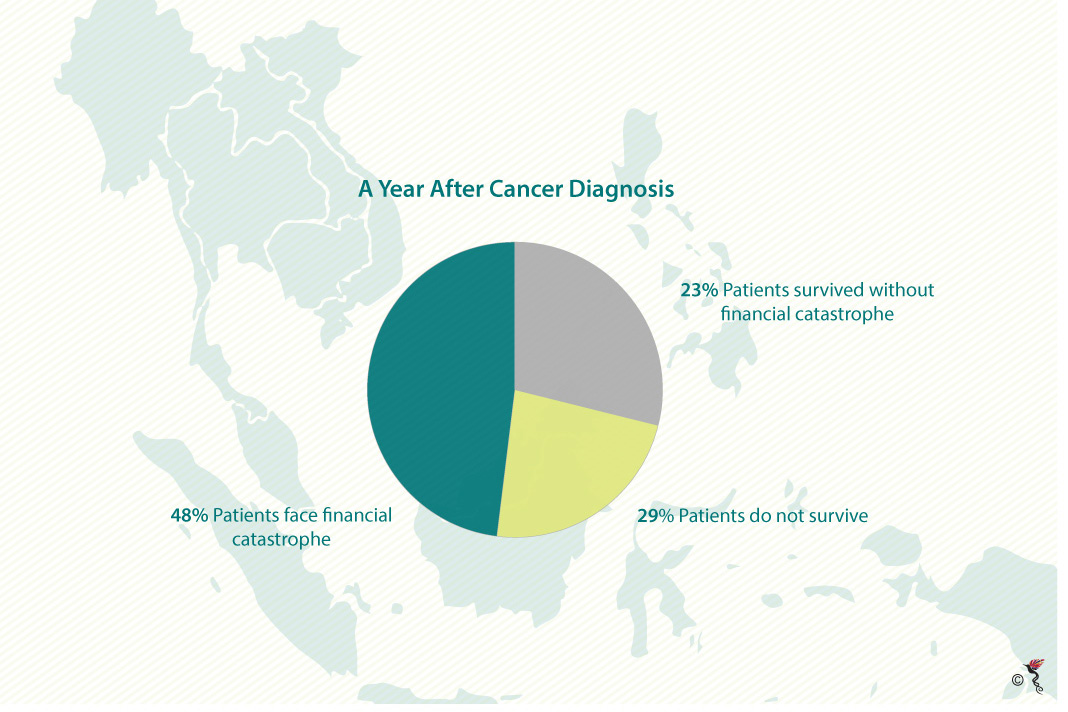It’s that time of the year again where people are handing out pink ribbons as part of a public awareness programme aimed at reminding women across the globe to head for a breast examination in order to combat breast cancer. Cancer in general, has been cited as the leading cause of mortality worldwide, with 8.2 million deaths recorded in 2012 alone based on a report published by the International Agency for Research on Cancer (IARC) – a cancer agency which serves as a part of the World Health Organization. At the same time, 70 percent of global deaths caused by cancer over the next two decades is predicted to make up of low and middle-income nations – a category which most of Southeast Asian nations fall under.
Cancer does not only harm or kill cancer patients, it also affects those who are close to them, such as friends, family members and co-workers. From radiotherapy to chemotherapy, the high cost of cancer treatments have also place immense strain on the cancer patients and their family members financially as well as emotionally.
The Asean Costs in Oncology (ACTION) study conducted by the George Institute for Global Health involved cancer patients across eight countries in the region – Cambodia, Indonesia, Lao, Malaysia, Myanmar, the Philippines, Thailand and Vietnam – was designed to assess the impact of cancer on economic wellbeing of the household, patients’ survivability and the quality of life.
At the end of the longitudinal study, researchers discovered that over 75 percent of cancer patients in Southeast Asia succumbed to the disease or have landed themselves in a financial catastrophe within one year of diagnosis. It was also found that the economic impacts will be felt most strongly in socio-economically disadvantaged groups, particularly those in low- and middle-income countries where social safety nets are less likely to be present.

Statistics of cancer patients in ASEAN countries. Source : George Institute for Global Health.
As the death rate and cancer prevalence have both increased in the Southeast Asian region, one could not help but to worry about the economic toll that the disease may have on the patients and their families. “Cancer can indeed pose a huge financial burden to a patient diagnosed,” stated Mohamed Ibrahim Wahid, the Medical Director and Clinical Oncologist of Beacon Hospital Malaysia, in a phone interview with The ASEAN Post. He added, “this is because not all cancer-drugs are funded by the governments and subsidies are clearly not enough. Apart from that, the lack of resources and not having enough cancer specialists poses a challenge to both healthcare sectors and patients in the region.”
At this point, both the public and private healthcare sectors in the region along with the support of non-governmental organisations must step up to help lessen the blows to the society through various funding and awareness programmes. There is also a clear need for governments to extend financial protection through social health insurance and publicly-supported cancer care to better protect patients from the costs associated with treatment. “It’s not easy but we need to address this issue,” Ibrahim continued. “Hospitals can set up funds to help minimise the burdens of cancer patients. As an example, we subsidise radiotherapy and give free treatment through our CSR Fund which cuts down the costs for patients substantially.”
Prioritising cancer as a major health issue will definitely improve survival rates and reduce the economic burden caused by the disease. Governments in the region also need to recognise that the costs associated with non-communicable diseases such as cancer are a major contributing factor towards poverty in Southeast Asia and efforts must be made to reduce the cost of treatments.
Recommended stories:
